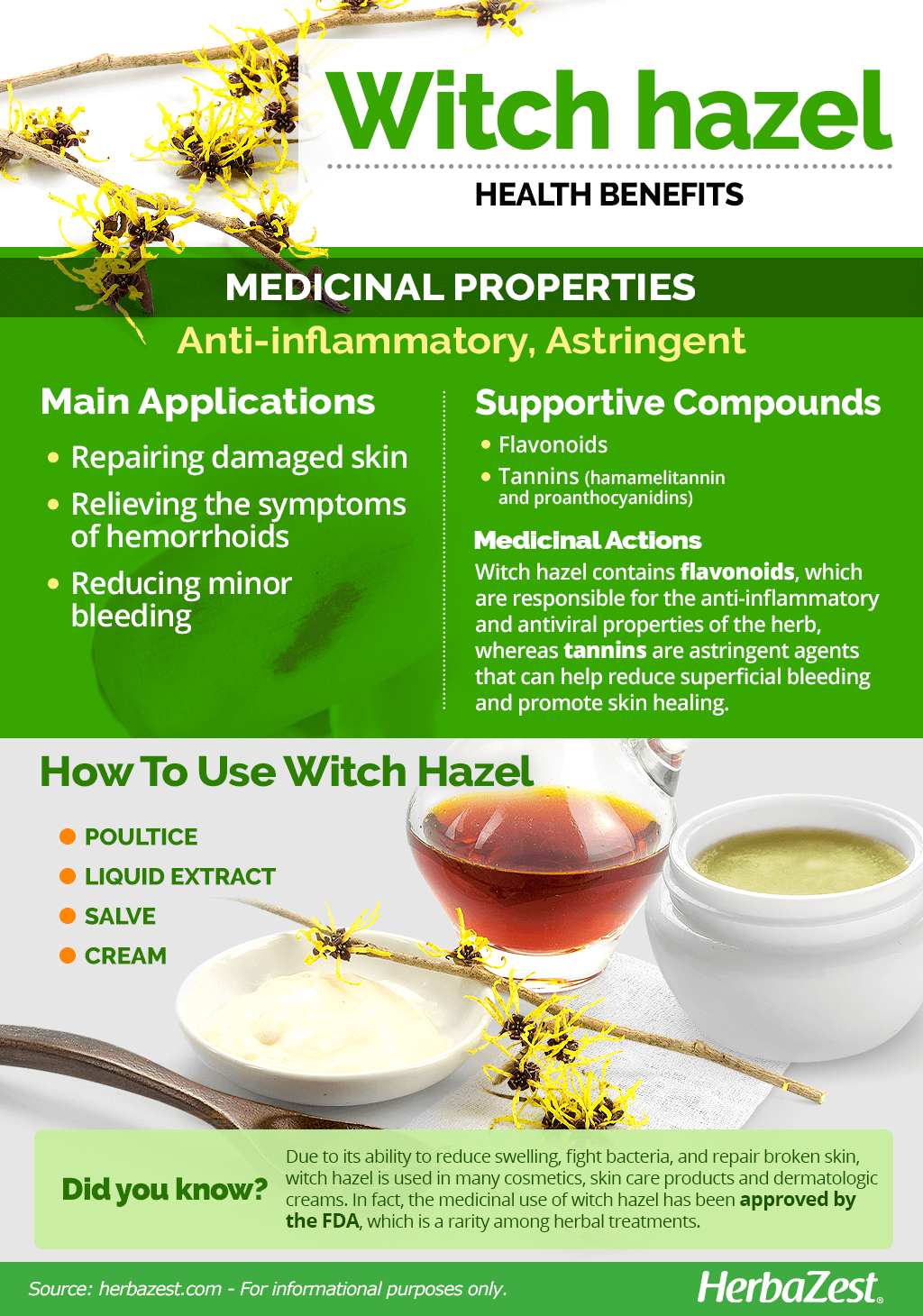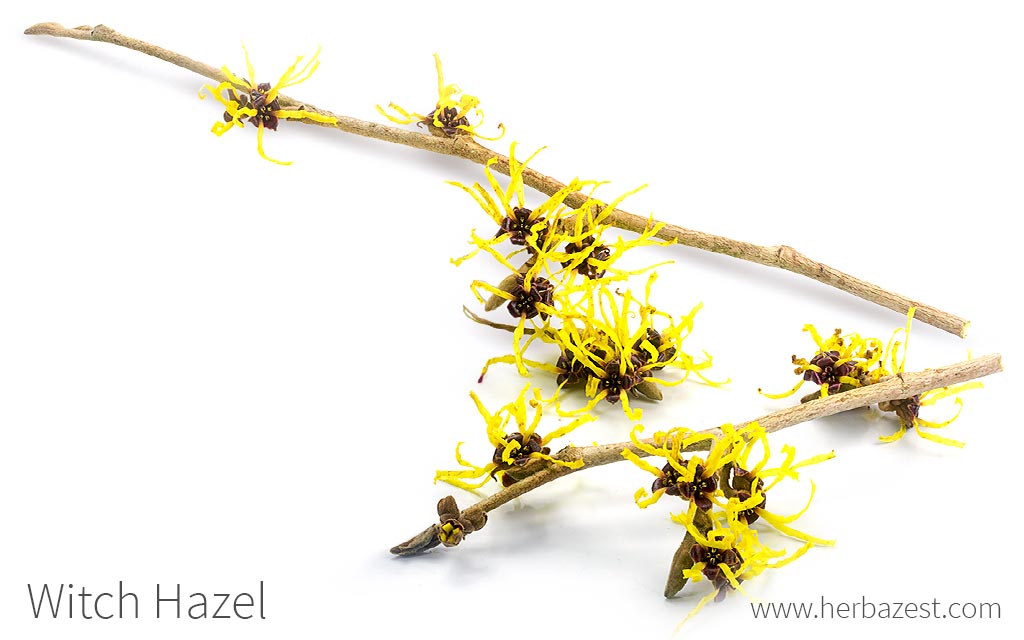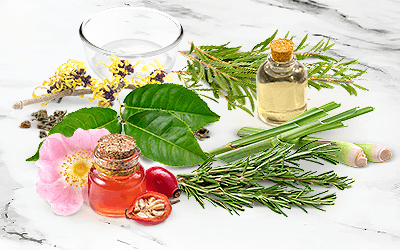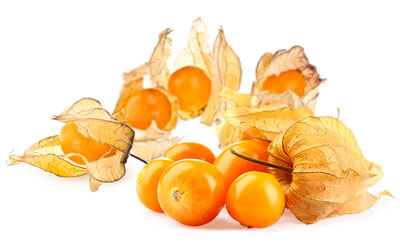This small shrub originated in eastern North America, specifically Canada and the Northeast coast of the United States. Today, it is commonly cultivated in Europe as well as in temperate climates around the world.
Witch hazel has a long history of healing uses. The bark, leaves, and twigs have all been used in traditional Native American medicine. Witch hazel is still commonly employed in many skin products and pharmacological preparations for hemorrhoids. It has also received FDA approval, which is a rarity among herbal treatments.
Witch Hazel Medicinal Properties
- Medicinal action Anti-inflammatory, Astringent
- Key constituents flavonoids, tannins (hamamelitannin and proanthocyanidins), and volatile oil
- Ways to use Liquid extracts, Poultice, Ointment
- Medicinal rating (5) Great value
- Safety ranking Safe
Health Benefits of Witch Hazel
Witch hazel has been used in Native American folk medicine for centuries. Its anti-inflammatory and astringent properties have been widely studied and validated by modern science, to the point that the herb has received the approval of the FDA. The benefits of witch hazel have found important medicinal applications, such as:
Repairing damaged skin. Witch hazel's properties have been traditionally used to help reduce swelling, fight bacteria, and repair broken skin.
Relieving hemorrhoid symptoms. Topical applications of witch hazel relieve the itching, burning, discomfort, and irritation caused by hemorrhoids.
Reducing minor bleeding. Applying witch hazel to superficial wounds may reduce minor bleeding.
How It Works
Witch hazel's main active compounds are flavonoids, tannins (hamamelitannin and proanthocyanidins), and small amounts of volatile oils, among others. Proanthocyandins have been found to reduce inflammation and have antiviral activity against the herpes virus.1,2
The tannins and flavonoids in witch hazel are responsible for the plant's skin healing properties, with studies demonstrating soothing effects of these compounds on the skin.3 Furthermore, proanthocyanidins seem to work by inhibiting inflammatory mediators and platelet activation.4,5 The flavonoids are particularly recognized for their antioxidant activity, contributing to the healing benefits of the plant.
Witch hazel contains tannins that may help reduce swelling, help fight bacteria, and repair broken skin.
Anti-inflammatory and emollient properties can be found in jojoba and aloe, whereas agrimony and mallow also offer astringent benefits.
Witch Hazel Side Effects
There are no reported side effects from witch hazel consumption, and the herb is considered generally safe. However, sensitive people might experience allergic reactions after using witch hazel topically.
As with any other herb, it is recommended to seek your doctor's advice before using witch hazel in any form.
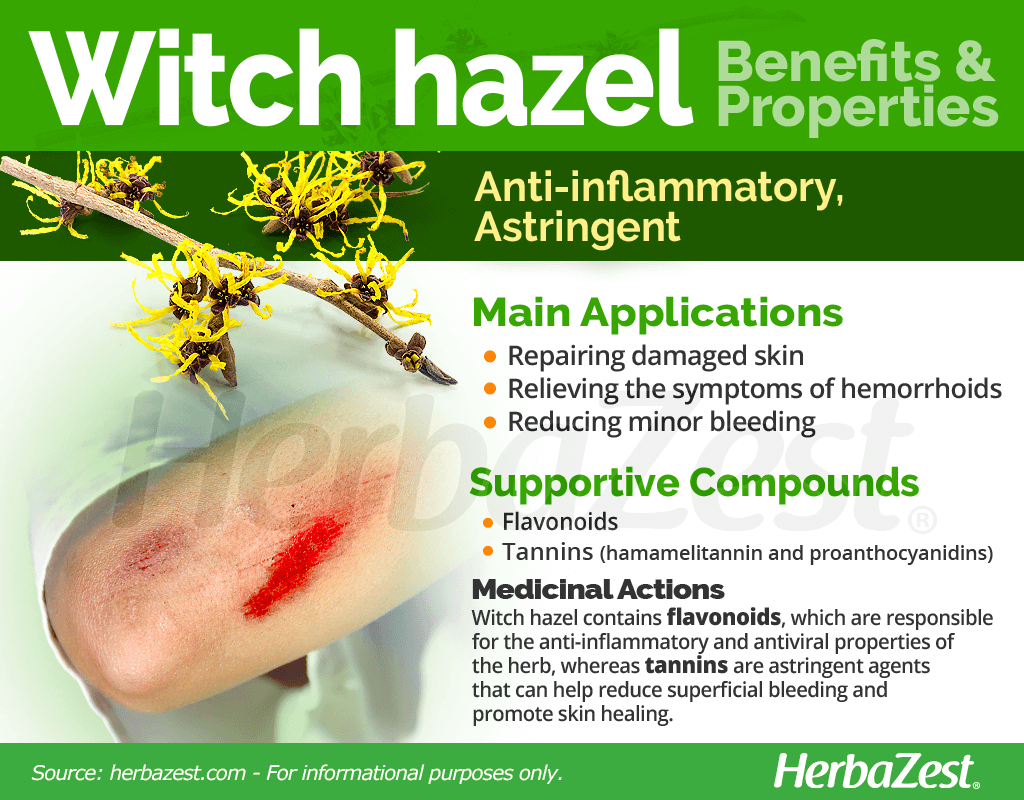
How to Consume Witch Hazel
- Edible parts Leaves
The properties of witch hazel are mostly obtained trough topical use since the plant has no culinary uses.
Natural Forms
Poultice. Witch hazel's leaves can be crushed and wrapped in a gauze in order to be applied topically for treating skin problems, like rashes, boils, and local inflammation.
A medicinal infusion can be made with the leaves, but it is not generally recommended to ingest the plant.
Herbal Remedies & Supplements
Liquid extract. Often combined with emollient herbs, witch hazel's distilled extracts are used for soothing skin conditions, such as acne and oily skin.
Salve. This is a homemade preparation that is not meant to be absorbed, but provide a protective layer over the area of the skin affected by boils, rashes, superficial wounds, and other dermatological complains.
Cream. Witch hazel is a common ingredient in many cosmetic creams that are easily absorbed by the skin since it provides astringent and antiseptic properties.
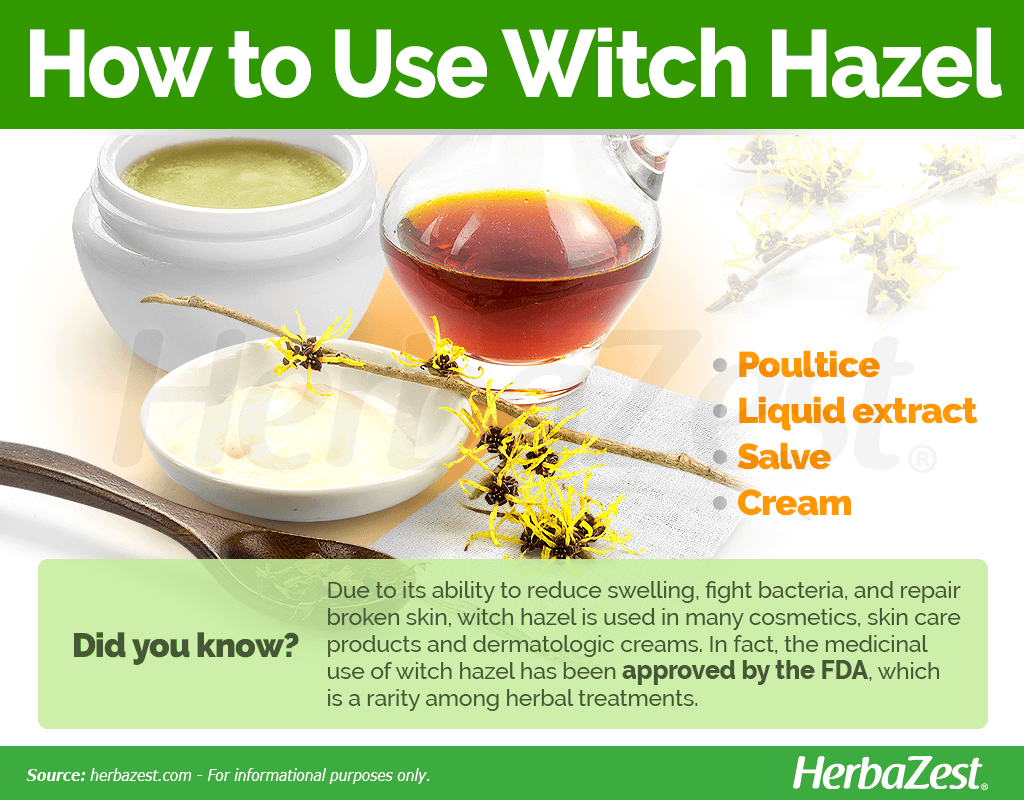
Growing
- Life cycle Perennial
- Harvested parts Leaves
- Soil pH 5.1 – 5.5 (Strongly acidic), 5.6 – 6.0 (Moderately acidic)
- Growing habitat Temperate climates, Woodlands
- Potential insect pests Fungi
In North America, witch hazel is a native species that can be found growing naturally from Nova Scotia to Florida and from the Great Lakes to eastern Texas. The plant has fragrant, bright yellow flowers which beautifully stand out in the autumn scenery in the woods. Witch hazel is a hardy species; however, some basic care in necessary for it to thrive in a home garden.
Growing Guidelines
The witch hazel plant grows best in acidic (pH value of 6 or less), rich, and moist soils and requires regular watering.
It does not cope well with too much sun as it is a woodland plant that naturally occurs in dark forests.
The common witch hazel plant is much easily grown from seeds than cuttings and should be planted in pots. They should not be transplanted until they are two or three years old.
Flowering will not occur until the plant is at least six years old.
Witch hazel is quite hardy and can withstand extremely cold temperatures, but it is also relatively sensitive to mildew and fungal leaf infestations.
Additional Information
- Other uses Cosmetics
Plant Biology
Witch hazel is a slow-growing deciduous shrub that can reach up to 16 feet (5 m). It can grow as a small tree, but it is quite rare. In winter, this perennial plant produces fragrant and distinctive-looking flowers - which can range from yellow to orange to red and even purple - followed by brown fruit capsules. When ripe, these capsules eject the seeds up to 12 feet (4 m) away. The leaves have large, wavy teeth on the margins, and the upper surface is dark green in color, whereas the lower is of a paler hue.
Classification
Witch hazel (Hamamelis virginiana) is a member of the small Hamamelidaceae family, which contains 23 species of shrubs and trees.
Varieties and Subspecies of Witch Hazel
Botanists have identified two naturally occurring varieties of witch hazel. The first one, also known as "common" or "standard" witch hazel, is Hamamelis virginiana var. virginiana, which can be found from Nova Scotia to Virginia. The "prairie variety" of witch hazel (H. virginiana var. parvifolia), on the other hand, is found mainly in Ohio. There is also a cultivar, 'Rubescens,' developed for landscaping and favored for its reddish flowers. In addition to these varieties, many hybrid species have also been developed, in particular by mixing Hamamelis virginiana with its close relatives, the Japanese and Chinese witch hazels (H. japonica and H. mollis).
Economic Data
Historically and presently, witch hazel is widely used for its medicinal benefits. It is also popularily used in the beauty industry, appearing in lotions, creams, and skin washes. Witch hazel is often found as an ingredient in toners and cleansers. The most common witch hazel product available in the U.S. is made from the whole twigs of the shrub. Extracts of the bark alone are used in Europe. Witch hazel saplings are also sold for living fences and parking strips as the plant's low water requirements make it a practical option for urban settings.
Popular Beliefs
With hazel was used by the Native Americans for finding underground water sources. European settlers observed that natives would know there was water beneath the ground when the dowsing end of the stick would bend, and so this practice was exported to Europe. Until the 20th century, dowsing was an essential part of the well-digging process.
Other Uses
Cosmetic industry. Owing to its natural astringent, anti-inflammatory properties, witch hazel is used as an ingredient in commercial products for treating acne, reducing puffy eyes, and soothing sunburn.
Sources
- USDA Plants Database, Hamamelis virginiana L. (American witch hazel) ; Plant of the Week
- Encyclopedia of Natural Medicine
- Rosemary Gladstar's Herbal Recipes for Vibrant Health, p. 125, 371
- Encyclopedia Britannica Online, Hamamelidaceae
- New York University - Langone Medical Center, Witch hazel
- University of Maryland Medical Center, Eczema
- Royal Horticultural Society, Hamamelis (witch hazel)
- Mayo Clinic, Postpartum care: What to expect after a vaginal delivery
Footnotes
- PLoS One. (2014). Tannins from Hamamelis virginiana Bark Extract: Characterization and Improvement of the Antiviral Efficacy against Influenza A Virus and Human Papillomavirus. Retrieved April 27, 2022, from https://www.ncbi.nlm.nih.gov/pmc/articles/PMC3909258/
- Journal of Inflammation. (2011). Antioxidant and potential anti-inflammatory activity of extracts and formulations of white tea, rose, and witch hazel on primary human dermal fibroblast cells. Retrieved April 27, 2022, from https://www.ncbi.nlm.nih.gov/pmc/articles/PMC3214789/
- Acta Biomedica. (2020). Treatment of haemorrhoidal disease with micronized purified flavonoid fraction and sucralfate ointment. Retrieved April 27, 2022, from https://www.ncbi.nlm.nih.gov/pmc/articles/PMC7569574/
- European Journal of Clinical Pharmacology. (1993). Anti-inflammatory activity of hamamelis distillate applied topically to the skin. Influence of vehicle and dose. Retrieved April 27, 2022, from https://pubmed.ncbi.nlm.nih.gov/8513841/
- Dermatology. (1998). Anti-inflammatory effect of hamamelis lotion in a UVB erythema test. Retrieved April 27, 2022, from https://pubmed.ncbi.nlm.nih.gov/9621139/
